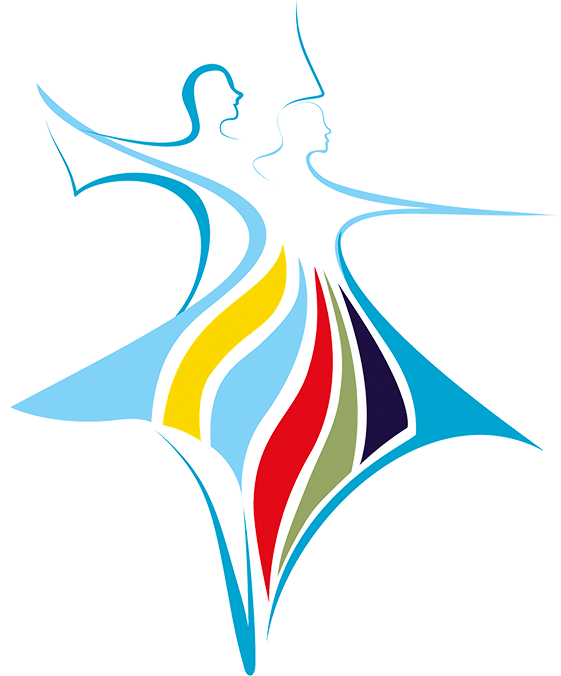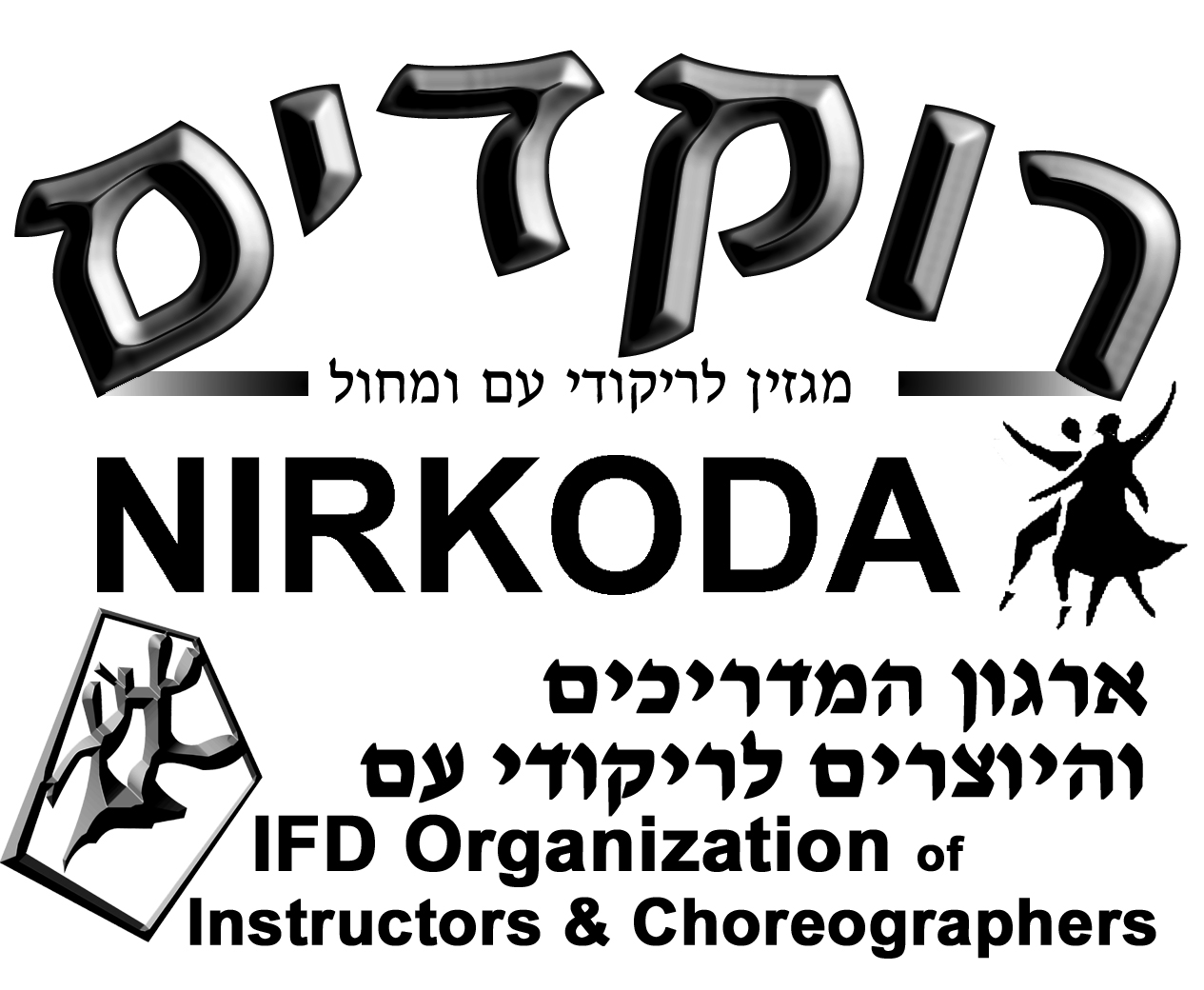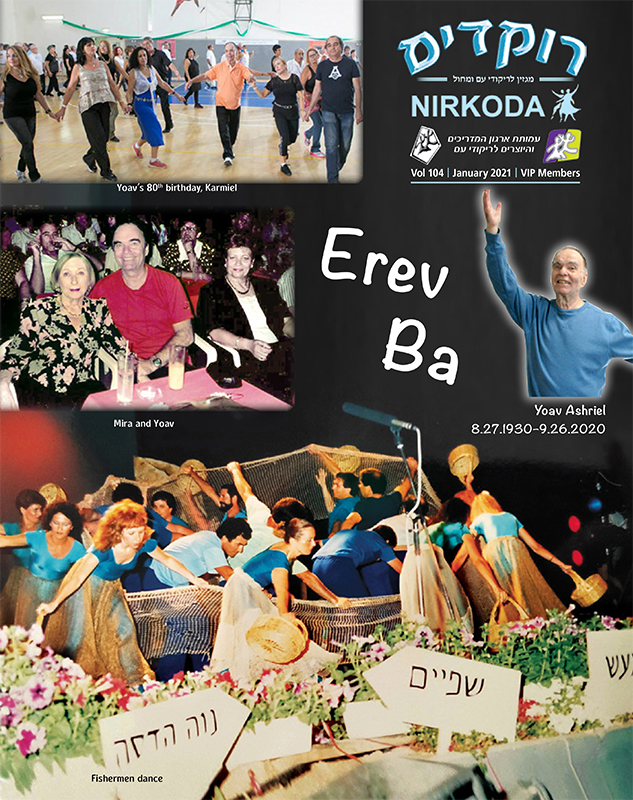- Home
- Rokdim Nirkoda 105
- Ta’am Ha’Man
From the forward to Yoav Ashriel’s dance notation booklet
I was born, raised and educated on Kibbutz Ramat David in the Jezreel Valley. My roots are here and it has influenced my creativity. For me, this is the most beautiful area in the country, at any time of the year and at any hour of the day.
I was first introduced to Israeli dance when I was 16 and participated in a folk dance course that took place in the area, under the guidance of Gurit Kadman. It is difficult to describe my enthusiasm for the dances, the atmosphere, the great momentum and the hopes at the beginning of the creation of Israeli folklore, the way of life and Israeli dances. This enthusiasm actually has continued to this day and it grows with time, with a deep connection and great love for the subject.
In my youth, I taught folk dance on the kibbutz and prepared performances for the holidays. While in the Nahal, I coached the Nahal dance troupe and its many performances, dance courses for instructors and many dance sessions. There I met Mira, who collaborated with me; she was an excellent instructor and a great dancer. Since then, we have been together as life partners and in every area, inspiring, assisting and actively participating in programs and mentoring.
After my release from the Nahal, I taught in many classes (chugim), at hishtalmuyot (workshops for instructors), and at many dance sessions for the general public at various events. I’ve set choreographies for many dance groups, for many performances both in Israel and abroad. Also, I’ve trained instructors and dancers abroad.
I’ve assisted veteran choreographers and newcomers in creating folk dances by polishing, notating and with their distribution. In addition, I’ve conducted hishtalmuyot for veteran instructors that I organized with Mira, along with providing instruction booklets of professional explanations and dance notations.
I started choreographing folk dances when I was released from the army. My first dance was “Ta’am Haman”, followed by many, many others. This booklet does not include all of them, but represents most of them, in the order in which they were created.
In my dances, I try to give expression to the feelings and experiences that have affected me. This includes the atmosphere of the kibbutz where I grew up, the pioneering communal life, the joys, the sadness and all the experiences that are shared together in the kibbutz. The landscape of the village, the fields and the nature of the Emek Valley, the Israeli atmosphere and experience, our pace of life, our special geographical (and human) landscape, and the climate of the changing seasons. The many sensations in our lives in the country, in every period. The many influences from every community in the country including song lyrics from the Bible and their special atmosphere. Our shared joy and the experience of dancing together. The partner dances, with the endless themes and variations between him and her.
All of these have an influence on how I create Israeli folk dances. However, the dances must be folk dances, simple and with flowing movements. The community that is dancing them should feel good about them and feel that they are expressing them faithfully.
Each dance has its unique shape, its own background, inspiration and special experience. They are influenced by a unique theme, melody and rhythm as well as the combination of movements, formations and steps. Each dance has its special story and the way it was created.
Thank you to my longtime friend, Danny Uziel, who urged and helped me in the publication of this booklet.
Yoav Sidi tells us about the dance:
The partner dance, “Ta’am Haman”, was choreographed in 1950.
The lyrics and melody of the song were written by Yitzhak Eliyahu Navon. (According to Bracha Tzafira, this is a Persian melody). Yitzhak Navon was a Jewish-Turkish-Israeli poet who died in 1952. It is a love song with biblical words such as myrrh and cinnamon and the legendary “manna” which provided food to the Israelites the desert.
Another well-known song of his is “Nitzanei Shalom”, to which Yoav also choreographed a partner dance.
Yoav took a folk dance instructors course in 1947. In 1950, he served in the Tzevet Havai Nahal. About “Ta’am Haman” he [Yoav] writes:
This is the first dance I choreographed; my intention was to present a calm, gentle and simple dance for couples. (This was something that was missing among the mostly fast paced dances at the time.) It combines a beautiful melody in the style of a Spanish romance in 3/8 meter rhythm with Yemenite steps and an Israeli atmosphere, with light, simple and flowing movements. The steps in the two verses are identical to each other. In the first verse, they are performed with the couple facing counterclockwise with hands crossed in front (skater’s position) and in the second verse, the partners face each other and repeat the step sequence.
Note: The term “verse”, in folk dance notation, means that the melody repeats again but there is a change in the movements; in this dance the change is in the formation.
The musical meter of the song, as it appears in most of the existing notations is 3/4, but there are places where it is written in 3/8. In the musical arrangement, you can certainly hear the eighth notes (in the percussion of the drum). To make the movement slow and gentle, Yoav chose to perform each step in 3/8 and in the dance notation he writes each measure of 3/8 as one count.
The dance begins with a Yemenite step but without the hold and without the Yemenite style. That is, this is the first time that the Yemenite step included in a dance did not have its original Yemenite character but is more like a European “balance” step.
The structure of the dance is similar to international folk dances in which there are basic steps that are danced once with couples in a circle and once in partners, and between the parts, there is chorus.
Prior to Ta’am Haman, dances which had the same idea (without the repeating chorus) were Or Chavatzalot and El Harahat choreographed by Rivka Shturman. Another dance by Yoav in the same style is Bat Tzurim.
It is an easy couple dance to perform and has both movements with the partner and also the adjacent couples while moving in double circles with partners facing; the men and women move in opposite directions. The position of the hands in the second verse of the dance is with a right hand hold (palms joined) while the man’s left hand covers the back of the woman’s right hand (“sandwich hold”); this is special and romantic but this does not appear in Yoav‘s notations! It may be that here, as in Hora Medura, Yoav‘s hand position was not included in the original notations but has become an integral and identifiable part of the dance through the years.
In one of the notations, Yoav added that the dance can also be danced to the melody of “Yaldati Me’Russia”. According to the prevailing opinion at the time, it was possible to exchange dance melodies, which would have added interest to the dance but cast a shadow of doubt about the effect of the content of the song (love song) on the choreography.
The dance is a beautiful combination of East and West; the melody is Eastern and the style is European while the Yemenite steps that originated in Arab women’s dances in Yemen changed character here and became Western. The dance is a lovely combination of close and intimate relationships with the partner as in social dancing which in this dance, includes the neighboring partner on either side.
It should be noted that in the first verse the boy does not “embrace” the girl at the hips nowadays (as is the case today in most dances); partners hold crossed hands in front (as in skater’s position). It may be typical of the more modest behavior that once was …
The dance has been danced to this day, mainly in nostalgia sessions, and has become, in the opinion of many, an inalienable asset of Israeli folk dance; it is undoubtedly the flagship dance of Yoav Ashriel who is considered one of the pillars of folk dance. Many of his dances have become folk dances, such as, Hora Medura, Hora Nirkoda, Kleyzmer, Layla Layla, Ez Vakeves.
Ta’am Haman
Formation: Partners in a circle
Structure: Two verses, each verse has two sections followed by the chorus.
Meter: 3/8 – each measure of 3/8 is notated as one count.
Part I
Section A Partners in a circle facing CCW, W to the right of M, hands joined in front in skater’s position.
1&2 Yem. L.
3-4 Step fwd on R, rock back on L in a swinging motion with knees slightly bent.
5-6 Repeat counts 3-4 beginning with a rock fwd on R.
7&8 Yem. R.
9-16 Repeat Section A counts 1-8.
Section B
1&2 Step side-tog-side [LRL] moving left towards center of circle.
3&4 Brush right foot in front of left leg; bend/flex knee of left leg, straighten/extend left knee.
5-8 Repeat counts 1-4 with opposite footwork and direction (side-tog-side moving right out of center, brush L in front of R, bend and extend rt. knee).
9-16 Repeat Section B counts 1-8.
Chorus Face CCW.
1&2 Yem. L.
3&4 Moving fwd in the circle: Step-tog-step fwd: RLR.
5-16 Repeat counts 1-4 three more times.
Part II
Section A Partners face each other in a double circle with M’s back to center; rt. hands joined at shoulder level, elbows bent. M’s left hand covers the back of W’s rt. hand.
1-16 Repeat Part I, Section A moving fwd/toward and back/away from partner.
Section B
1-4 M releases his left hand. Repeat the movements of Part I, Section B moving to the side. During the brush step, the bottom [sole of the front part] touches the sole of the diagonally opposite person. During the bending step, touch left hands with that same person.
5-8 Repeat counts 1-4. Release rt. hands. Left hands join during the sliding steps; use opposite footwork and direction.
9-16 Repeat Section B counts 1-8.
Chorus Face CCW.
1-6 Same as in Part I.
Dance notation by Ruth Schoenberg
Ta’am Haman – Taste of Manna
Music and lyrics: Yitzchak Eliyahu Navon
Verse 1
You’re shape – a delicate form, Sweet scented, wrapped in myrrh,
Your lips are crimson,
They speak wisdom, their taste is like manna.
Chorus:
The taste of manna, manna, manna,
If told, it would be unbelievable.
Verse 2
Nectar, wine, milk and honey
Won’t quench my thirst, my palate is dry,
When I will kiss your lips
You will douse me with your delights.
Chorus
The taste of manna…
Verse 3
My song, please soar
Like a dove to my innocent one.
She’s as bright as the sun,
Accompanied by pleasant grace.
Chorus
The taste of manna…









Comments
התראות